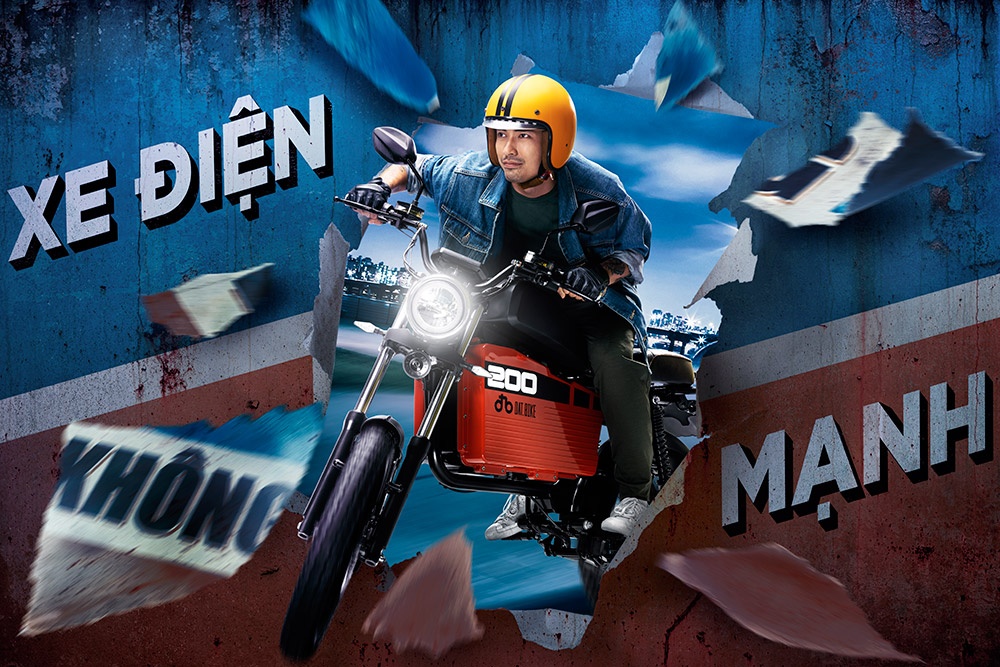Dat Bike’s vision to electrify the region
Having been present in the market for a few years, how has Dat Bike performed thus far?
 |
| Son Nguyen, CEO of Dat Bike |
We are lucky and grateful to have received support from partners, suppliers, and customers in that time.
We have had commercial products in the market since 2020. Dat Bike has introduced two flagship electric motorbike models, the Weaver and Weaver 200, and opened a chain of stores in Hanoi, Danang, and Ho Chi Minh City.
Besides strong growth and expansion of business and production scale, our other great achievement is to win recognition for our e-bikes, which have enough efficient performance and power to replace petrol bikes. As the only Vietnamese-made e-bike brand that sources parts locally, we are proud of being a manufacturer with the best performance-to-price ratio in the market today.
Dat Bike’s e-bikes are also smart, with a specially developed controller with remote firmware update feature. With this advanced technology, the Weaver 200 has been strongly welcomed since its debut in the market in November 2021. The company’s revenue has grown 10 times compared to the period before the launch of the Weaver 200.
Why did you decide to choose e-bikes to promote sustainable development?
This is the most direct and efficient solution to improving the air quality in Vietnam, and in other countries in Southeast Asia in general.
In the past when I lived in the US, I received information about the home country where the air quality has been dropping due to air pollution, mainly caused by gas-powered vehicles. This prompted me to find a solution that could replace traditional motorbikes in the market.
At that time in the US, the e-vehicle industry had developed strongly, but mostly focused on cars. Most of the e-motorcycle brands there could not survive long, or developed strongly as expected because they did not have the market. Meanwhile, Vietnam and other markets in Southeast Asia have a lot of potential. With the development and availability of advanced technology globally, I decided to return to Vietnam and start a business with e-bikes.
 |
Businesses in Vietnam are now more aware about the energy transition. How does Dat Bike’s development vision align with the trend?
Sustainable development is a popular topic and Dat Bike is also involved in the discussion. We have the advantage to take the lead in the bike industry because our models use renewable energy without discharging smoke, dust, and carbon into the environment and causing noise pollution.
If in the future when electricity can be totally sourced from green power like wind or solar, e-bikes will further contribute to creating a sustainable society.
As a brand that produces and sells directly to customers, we are aware of our responsibility to ensure a supply of high-quality products to customers, while orienting customers about sustainable development.
With this vision in mind, besides business activities, Dat Bike has been studying and cooperating with partners in preparing for the reuse and recycle of electric vehicle batteries, or setting up a factory completely using renewable energy in the future.
In terms of the battery system, can you tell us more about where the market is headed?
The battery pack model, or battery rental one, is popular in many countries and each has its own advantages and disadvantages. We always want our products to be improved and developed more in line with the general development of technology in the market, especially in the context that battery technology has changed and developed rapidly.
If a manufacturer decided to invest much in battery exchange system (including exchange stations and rechargeable batteries at each), it is always a headache to consider the cost to decide whether to use new battery technology or old tech for new flagship models.
If one decides to optimise operation and efficiency in the use of cost and capital for battery exchange stations that future models will not inherit the development of new battery technology, it will be a pity for customers.
Dat Bike targets to introduce one new product every year. Could you share your plans for 2023?
This is also a difference between Dat Bike and other brands in the market. Normally, the time from prototypes to the delivery of finished products in this industry is about five years. However, thanks to the vertical integration model and strong determination in product development and continuous improvement, we can release a new model every 15-18 months.
We cannot yet share details about our new model to be released in 2023, but next-generation models will be better equipped with more advanced technology. They are partly developed based on customer suggestions.
The core point in product development at Dat Bike is how to create an e-bike that operates better each time. One example for this is our recent development of a superfast charging station called Dat Charge. Although we have the fastest charging speed in the market, able to run about 200km with a full charge of three hours, and the first 100km with a charge of one hour, Dat Charge even enables them to triple the fast charging capacity. With this, we expect to be a pioneer in setting up a fast-charging standard for e-bikes in the market.
Will Dat Bike seek fundraising to support its journey?
With an ambition of electrifying the motorbike market in the region, Dat Bike has been ceaselessly making efforts in product development because the quality and performance of e-bikes will be the decisive factor for customers to convert to electric bikes. This is a long journey that cannot be done overnight but we are moving in the right direction.
Dat Bike has recently successfully raised $8 million from foreign venture funds that will support us in this journey to conquer customers in Southeast Asia. In the next few years, I believe that many foreign brands will enter the Vietnamese and regional markets with diversified e-bike models from designs to price segments. Therefore, to enable us to stand firm and win customer confidence in the market, we have to quickly assert our leading position in all three: price, performance, and understanding of customer tastes through each model.
What the stars mean:
★ Poor ★ ★ Promising ★★★ Good ★★★★ Very good ★★★★★ Exceptional
Related Contents
Latest News
More News
- First members of Danang International Finance Centre revealed (December 22, 2025 | 17:39)
- Human-centred governance seen as key to AI development (December 19, 2025 | 18:19)
- Top 10 notable events of Vietnam’s industry and trade sector in 2025 (December 19, 2025 | 14:00)
- Tungsten surges to 12-year high as world enters a new 'black gold' race (December 18, 2025 | 17:27)
- Vietnam’s coffee exports set new record despite price pressures (December 18, 2025 | 17:13)
- Garment and textile sector seeks new growth after volatile year (December 18, 2025 | 17:01)
- VinSpeed and Siemens strengthen cooperation for high-speed rail development (December 18, 2025 | 16:53)
- High-tech adoption for TH true MILK (December 18, 2025 | 13:39)
- Takeda supports health resilience amid climate change challenges (December 18, 2025 | 12:39)
- Mondelez Kinh Do - a chapter of purpose-led leadership in Vietnam (December 18, 2025 | 09:44)

 Tag:
Tag:






















 Mobile Version
Mobile Version